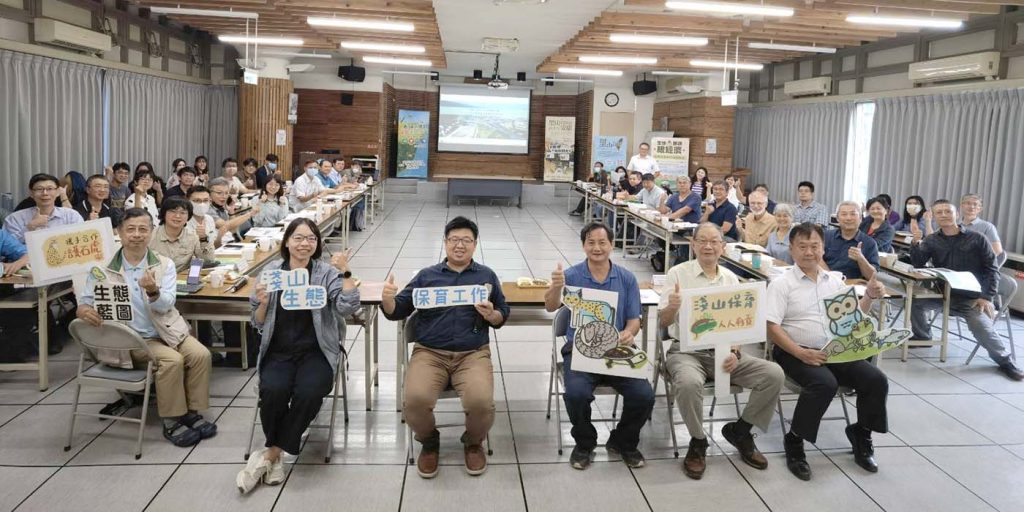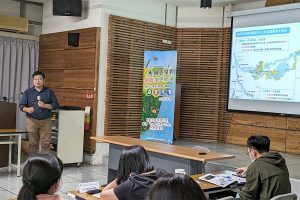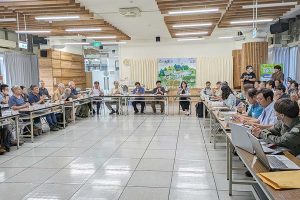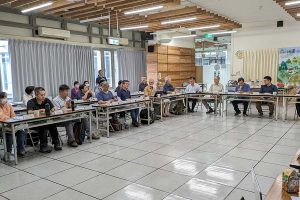In recent years, issues related to the National Green Network have garnered increasing public attention. To foster deeper understanding and concrete ecological conservation actions among the platform’s various units, the Forestry Bureau’s Nantou Branch hosted the “2023 Cross-Regional Ecological Corridor Connectivity Exchange Conference” on November 9th at 2:00 PM in the third-floor auditorium of the Nantou Branch of the Forestry and Nature Conservation Agency.
The event brought together 14 government agencies, including the Council of Agriculture’s Biodiversity Research Institute, the Central Region Water Resources Office of the Water Resources Agency, the 3rd, 4th, and 5th River Management Offices of the Water Resources Agency, the Central Maintenance Engineering Office of the Directorate General of Highways, the Central Region Maintenance Engineering Office of the Freeway Bureau, the Nantou Branch of the Rural Development and Soil and Water Conservation Agency, the Agricultural Bureau of Taichung City Government, the Agricultural Departments of Nantou, Changhua, and Yunlin County Governments, and the Water Resources Department of Changhua County Government, as well as the Nantou County Livestock Disease Control Center.
Participants also included the NPUST Department of Forestry, the Taiwan Raptor Research Group, the Taiwan Leopard Cat Association, the Taichung Wildlife Conservation Association, the Nantou Bird Society, the Changhua Bird Society, the Yunlin Bird Society, the Mai-Tz-Liau Cultural Association, the New Homeland Foundation, and the Taiwan Sustainability Alliance. Discussions focused on the current state and future collaboration opportunities for low-mountain ecological conservation within the Nantou Branch’s jurisdiction, addressing issues such as measures to reduce roadkill, the integration of regional green networks between conservation axes, and planning other relevant conservation initiatives.
This platform meeting provided participants with a comprehensive understanding of the current progress of the regional ecological green network promoted by the Nantou Branch of the Forestry Bureau. The Biodiversity Research Institute was invited to elaborate on the challenges and potential improvements for the low-mountain ecosystem. The Central Region Maintenance Engineering Office of the Directorate General of Highways and the 3rd River Management Office shared their conservation achievements in developing safe road networks and protecting the Wu River watershed.
The NPUST Department of Forestry presented applications of spatial mapping related to the National Ecological Green Network blueprint. During the meeting, participants engaged in discussions on the coordination and division of conservation efforts among various agencies, aiming for the positive development of both the overall ecology and the living environment within the Nantou Branch’s jurisdiction.
The Nantou Branch of the Forestry Bureau expressed its gratitude for the collaborative efforts from the public, private, and academic sectors. Through this platform meeting, they emphasized the importance of such collaborative discussions to gradually implement related tasks, enhance the connectivity and restoration of habitats along the green network axes, and provide the best solutions for ecological services and restoration.
Since 2018, the Nantou Branch of the Forestry Bureau has invested resources and personnel into the implementation of the National Ecological Green Network plan. They have identified and established six conservation corridors within their jurisdiction, encompassing a diverse range of ecosystems such as streams, hills, and coastal areas. The National Ecological Green Network employs a multifaceted strategy that balances living, production, and ecological needs to restore fragmented habitats in the low-mountain and plain areas.
Achieving these goals cannot be done by the Nantou Branch alone; it requires collaborative efforts with various experts, agencies, and spatial management units, including those in transportation, water resources, public works, and local governments. By considering and integrating the interests of different stakeholders, the aim is to co-create a harmonious and sustainable ecological development that builds a comprehensive blue-green network across the western region.









